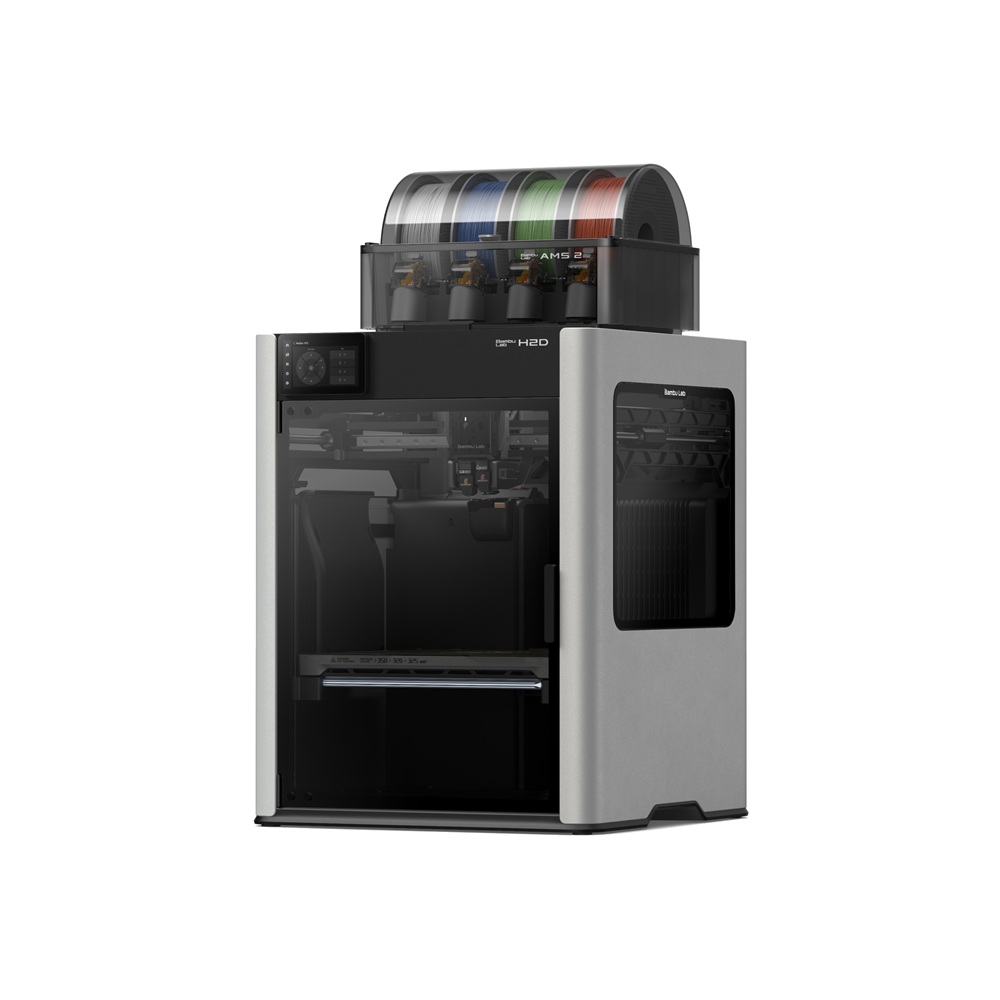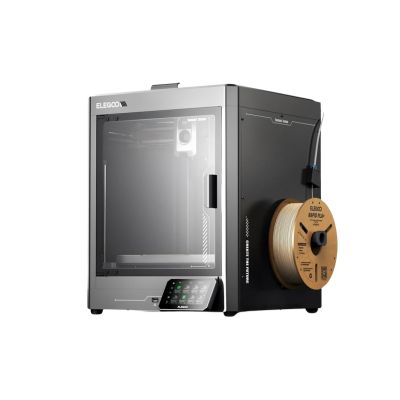Compare H2D vs Centauri Carbon
Comparison between the best 3D printers
Choose the best 3D printer at the best price. The cheapest 3D printers are here.
Buy a 3D printer here with 3D Fila.
 |
 |
|
| Model | H2D |
Centauri Carbon |
| Printing Material | Filament | Filament |
| Buy Filament for Bambu Lab H2D | Buy Filament forElegoo Centauri Carbon | |
| Estimated price | $1899,00 | $500,00 |
| Manufacturer | Bambu Lab | Elegoo |
| Release Year | 2025 | 2025 |
| Print Volume [mm] | 350x320x325 | 256x256x256 |
| Printer Size [mm] | 492x514x626 | 500x500x600 |
| Weight [kg] | 42,3 | 17,5 |
| Power Loss Recovery | YES | YES |
| Enclosed printer | YES | YES |
| Bed Leveling | Automatic | Automatic |
| Filament End Sensor | YES | YES |
| Bed type | Heated | Heated |
| Power supply system | Direct Drive | Direct Drive |
| Standard nozzle | 0,4 | 0,4 |
| Maximum Nozzle Temperature [°C] | 350 | 300 |
| Maximum Bed Temperature [°C] | 120 | 110 |
| Maximum printing speed [mm/s] | 600 | 500 |
| Filament holder | YES | YES |
| Camera for supervision | YES | YES |
| Recommended filaments | PLA, PETG, ABS, ASA, TPU, PVA, Nylon (PA) | PLA, PETG, ABS, ASA, TPU, NYLON, CARBON FIBER |
| Recommended slicers | Bambu Studio | Elegoo Slicer, Orca Slicer |
| Maximum Resolution [mm] | 0,01 | 0,1 |
| Processor | ||
| Display | Touchscreen 5'' | Touchscreen 4,3'' |
| Power Supply | 350 W | |
| Connectivity | Wifi, Bambu bus, Cartão SD | WiFi, SD, USB |
| Operating systems | Windows, Mac, Linux | Windows, Linux e Macbook |
| Date of registration in the system | 2025-03-31 | 2025-02-10 |
| Release date | 2025 | 2025 |
| Extra features | Bambu Labs H2D combines high-speed 3D printing with a chamber heated up to 65 °C, dual extrusion with automatic nozzle switching, an AMS for filament drying and exchange, and AI sensors that detect failures. It offers optional laser and digital cutting capabilities, features intelligent calibration through computer vision, vibration control, enhanced fire safety, and real-time camera monitoring. | The Elegoo Centauri Carbon is a CoreXY 3D printer with an enclosed structure, direct drive extruder, and hardened steel components for abrasive materials. It features automatic bed leveling, a touchscreen, a filament cutting system, and an elongated nozzle designed to reduce clogs. It offers Wi-Fi connectivity for remote file transfer and runs on a Klipper-based firmware, providing advanced control and precise adjustments. |
| Support for multiple colors and materials (AMS and CFS) | YES | NO |
Notes * |
||
| Cost-benefit | 7 / 10 | 8 / 10 |
| Hardware | 8 / 10 | 6 / 10 |
| Tela | . | . |
| Print volume | 4 / 10 | 4 / 10 |
| Performance | 5 / 10 | 4 / 10 |
Conclusion |
| In comparing the Bambu Lab H2D and the Elegoo Centauri Carbon 3D printers, several key factors emerge that can guide potential buyers in their decision. The Bambu Lab H2D, positioned as a premium option, offers advanced features such as high-speed printing, dual extrusion, and comprehensive AI sensors for failure detection, all of which make it suitable for complex projects and professional applications. Its larger print volume, higher maximum nozzle and bed temperatures, and superior maximum resolution also contribute to its capabilities for handling a wider variety of materials and producing high-quality prints. However, this level of sophistication comes with a higher price tag and a heavier build. On the other hand, the Elegoo Centauri Carbon provides a more budget-friendly option while still featuring essential capabilities like an enclosed structure and direct drive extrusion. It is particularly advantageous for those looking to print with abrasive materials and offers solid print quality at a lower cost. Its simplicity makes it appealing for hobbyists and those newer to 3D printing. Ultimately, the decision between the two models should hinge on individual needs and budget. For users requiring high performance and advanced functionality for intricate printing tasks, the H2D represents a worthwhile investment. Conversely, for those seeking value and reliability in a 3D printer without the necessity for the most advanced features, the Centauri Carbon stands out as an excellent choice. |

